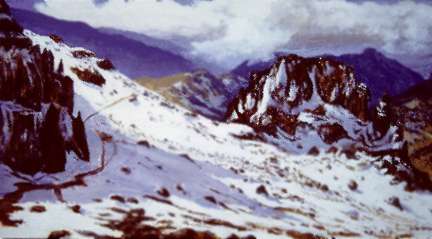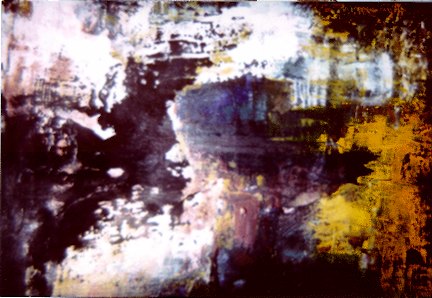McAllen International Museum
Nishizawa Y Sus Alumnos
Click on the images below to view works of the exhibit. . .
The museum recently opened NISHIZAWA Y SUS ALUMNOS, an exhibition of recent works by Luis Nishizawa, and oil and tempera paintings by three of his premier students. The paintings will be on view in the museum's Art Gallery through June 21.
Nishizawa has acquired a considerable reputation in Mexico, as a teacher as well as an artist. For two generations now he has unselfishly nurtured the careers of many successful young artists. Born of a Japanese father and Mexican mother in 1918, his early years were spent in poverty on a farm in the state of Mexico. While still very young he was put to work minding the stock. Bored with his pastoral responsibilities, and lacking such luxuries as paper and pencil, he would draw the animals and plants around him in the soil with his shepherd's staff. As he matured he became fascinated by the effects of the changing light on the rural landscape around his home, and sought to capture it in his early paintings.
When the family moved to Mexico City, the boy's talent for drawing impressed one of his teachers so much that he fostered his interest and encouraged Nishizawa to attend the National School of Art. Since then, Nishizawa's career as both fine artist and teacher has flourished.
His career has been a journey of sorts for Nishizawa, a meandering exploration of various vogues and media that have been consolidated into a distinctive but still evolving style. His past "oeuvre" includes robust still lifes depicting the lush and colorful fruits of Mexico, impressionistic landscapes of central Mexico, and ink and watercolor studies that reveal a fascination with the Zen Buddhist principles of oriental art. His successful experimentation in various media and formats has strengthened his considerable effectiveness as a teacher.
The works by Nishizawa featured in this exhibition are a series of encaustic paintings entitled "On the Road" (Serie del Camino). They consist of loose but deftly applied explosions of color that hover on the edge of representational impressionism, but at the same time have much in common with the abstract paintings of Clyfford Still or Sam Francis. Like much of Nishizawa's work they are subtly infused with an oriental delicacy that has become his hallmark. Nishizawa equates these paintings with Japanese haiku, those threeline poems that must be both succinct and rhapsodic in summing up a fleeting mood or observation. This "On the Road" series does just that.
That Nishizawa would share an art show with his students is evidence that he considers his teaching as important as his painting. He has chosen three of his premier students to share this exhibit with him.
- Jorge Obregón Ramos
- Alfredo Nieto Martínez
- Luz García Ordoñez
are all realist painters, an interesting contrast to their teacher's adjacent abstract works.
Jorge Obregón is a landscape specialist who is fascinated by the form, textures and seasonal changes of mountains. Alfredo Nieto and Luz García Ordoñez both present still lifes, richly colored celebrations of the fruit and flowers of Mexico. Their high level of skill is testimony to the maestro's teaching.
Valley artists will have an opportunity to learn the encaustic process from Nishizawa in a class he will offer at the museum from April 27 through May 3.
The encaustic process of applying paint has its roots in ancient Greece. It was supplanted in the middle ages by oil and tempera, which are more convenient but less stable media. It was revived briefly in the 18th century, but it has been taken up again by modern artists thanks to the easier heating treatments afforded by electricity. The basic encaustic method consists of painting on any surface with paints made by mixing dry pigments with molten white refined beeswax, plus a variable percentage of resin, working from a warm palette. The brush or palette knife manipulations can also be assisted by warming and chilling the surface. A final heat treatment or "burning in" (which is the meaning of encaustic) by passing a heat source over the surface, fuses and bonds the painting into a permanent form without altering it, and a light polishing with soft cotton brings out a dull satiny sheen. Practically any desired surface texture is possible. If the surface is kept warm, free-flowing manipulations and blending may be carried out as with oil colors or enamels; on a cooler surface touches will stand out brilliantly and separately.
For more information please call the museum's Education Department at 682-1564, extension 115 or 116.
The McAllen International Museum is grateful for the cooperation of the Mexican Consulate in bringing this exhibition and class to the Rio Grande Valley.



